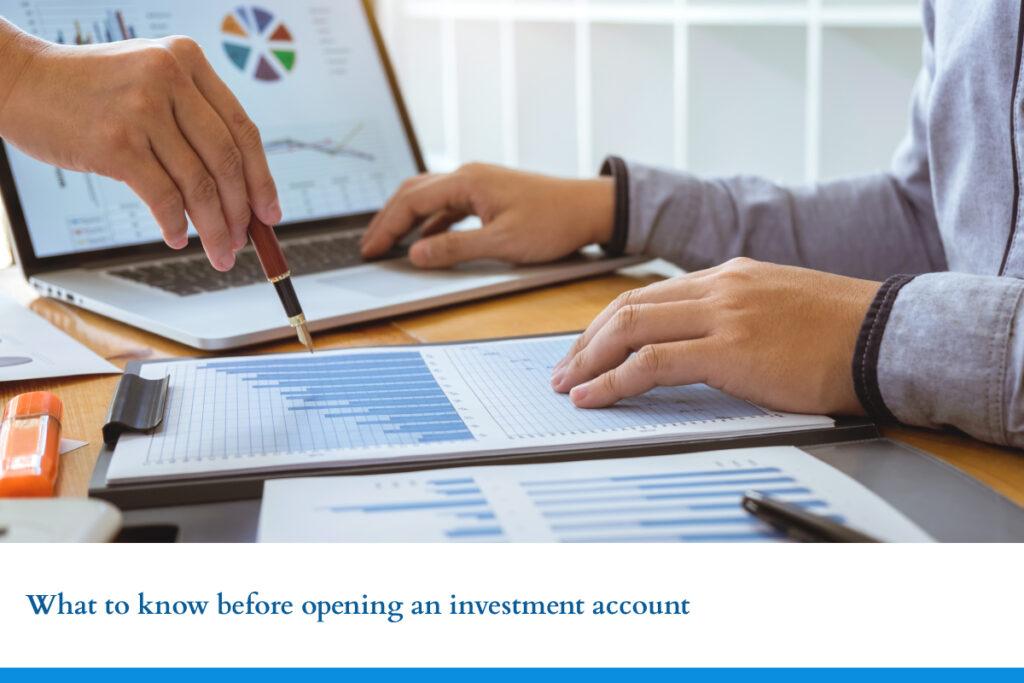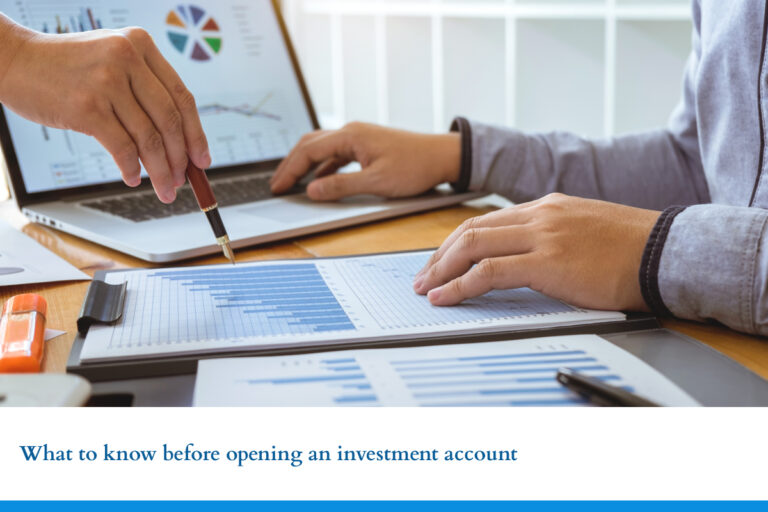Opening an investment account is a smart step toward building long-term wealth, whether saving for retirement, your children’s education, or simply looking to grow your capital. But before diving in, it’s important to understand how different types of accounts work, especially when it comes to tax implications, contribution limits, and investment income.
At MMT Chartered Professional Accountants, we specialize in investment account guidance for clients in Vancouver and Calgary. Here’s what you should know before opening one in Canada.
Understand the Different Types of Investment Accounts
There are several account types available to Canadian investors, each with its own tax treatment, contribution rules, and ideal use cases. The most popular accounts include the Tax-Free Savings Account (TFSA), the Registered Retirement Savings Plan (RRSP), and non-registered investment accounts.
A TFSA allows your investments to grow tax-free, meaning you won’t pay tax on any interest, dividends, or capital gains earned within the account. Withdrawals are also tax-free and can be made at any time, making the TFSA an excellent choice for medium- to long-term savings. For 2024, the annual contribution limit is $7,000, and unused room carries forward, so you can catch up later if you’ve missed prior years.
An RRSP, on the other hand, is designed for retirement savings. Contributions are tax-deductible, which can lower your taxable income for the year. Investments grow tax-deferred until withdrawal, typically during retirement when your tax rate may be lower. The contribution room is based on 18% of your earned income, up to a limit of $31,560 in 2024.
Non-registered investment accounts offer fewer restrictions for those who have maxed out their TFSA and RRSP or who want more flexibility. However, any investment income earned in these accounts is taxable, so strategic planning is important.
Know How Investment Income Is Taxed
Not all investment income is treated equally under Canada’s tax rules. Interest income, such as that earned from savings accounts or GICs, is fully taxable at your marginal tax rate. This means it’s the least tax-efficient form of investment income when held in a non-registered account.
Eligible dividends, typically received from Canadian public companies, benefit from a dividend tax credit, resulting in a lower effective tax rate compared to interest. Capital gains—profits made from selling an investment for more than its purchase price—are even more favorable. Only 50% of a capital gain is included in your taxable income, making it the most tax-efficient type of investment income outside of registered accounts.
These distinctions matter when deciding which investments to hold in which accounts. For example, interest-generating assets may be better suited for TFSAs or RRSPs, where the income is sheltered from tax. Meanwhile, equities that generate capital gains or dividends might be more appropriate for non-registered accounts, where they’ll be taxed more lightly.
Consider Your Investment Goals and Time Horizon
Before opening an investment account, defining your investment goals and time horizon is important. Are you saving for retirement, a home, or your child’s education? Will you need access to the funds in five years or twenty? Your goals and timeline will influence not only the type of account you choose, but also the investments you hold within it.
For example, if you’re planning to buy a home, a TFSA can be a great tool because of its tax-free withdrawals. If you’re considering long-term retirement savings, an RRSP can offer tax benefits now and in the future. A Registered Education Savings Plan (RESP) may also be worth exploring for education savings, as it comes with government grants and tax-deferred growth.
Fees and Account Minimums Matter
Investment accounts come with various fees and features depending on where and how you open them. Some platforms charge management fees, others may charge for each trade you make, and financial advisors may charge a percentage of your assets under management. Over time, these costs can add up and significantly impact your returns, so it’s important to understand what you’re paying for.
In addition to fees, you should consider whether the platform or advisor offers the tools and support you need. Some investors prefer a self-directed account for full control, while others benefit from professional guidance or automated solutions like robo-advisors. Choosing the right provider depends on your comfort level with investing and your overall financial plan.
Work with a Professional to Maximize Tax Efficiency
Investment decisions shouldn’t be made in a vacuum. Your investment account strategy should align with your overall financial and tax picture. That’s where working with a professional can be a game-changer.
At MMT Chartered Professional Accountants, we can help:
- Maximize deductions and credits (e.g., RRSP contributions).
- Structure your accounts for long-term tax efficiency.
- Develop a plan that balances saving, investing, and income needs.
We also coordinate with financial advisors to ensure your tax and investment strategies are aligned — no surprises come tax season.
Next Steps for New Investors
Opening an investment account is easy, but it is key to building lasting wealth with the right plan behind it.
Whether you’re just getting started or looking to refine your existing portfolio, our team of experienced accountants in Vancouver and Calgary is here to help. We’ll guide you through account selection, tax planning, and long-term strategy to make the most of your money.
Want to get started? Book a consultation with MMT CPA today and take the first step toward confident, tax-smart investing.





